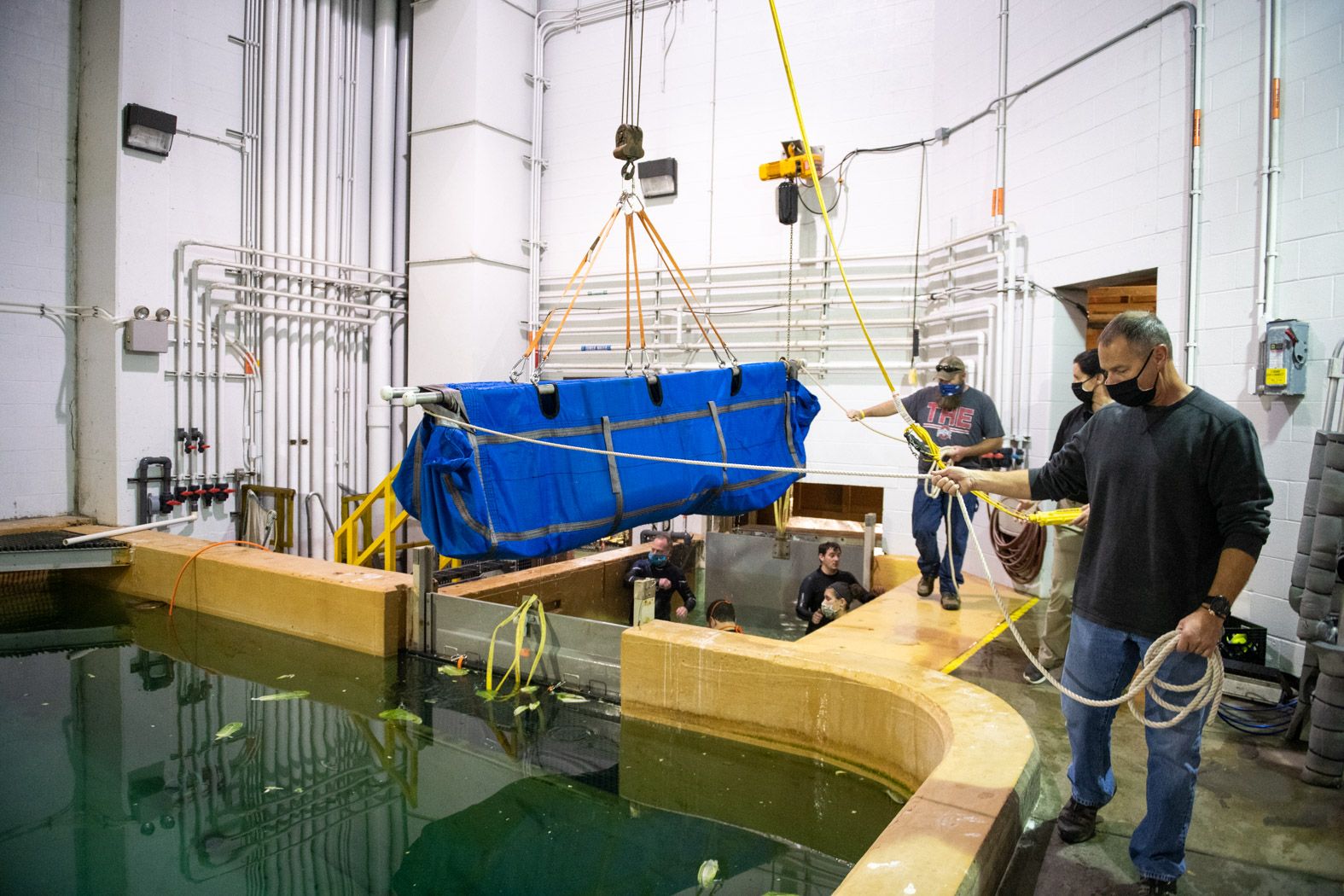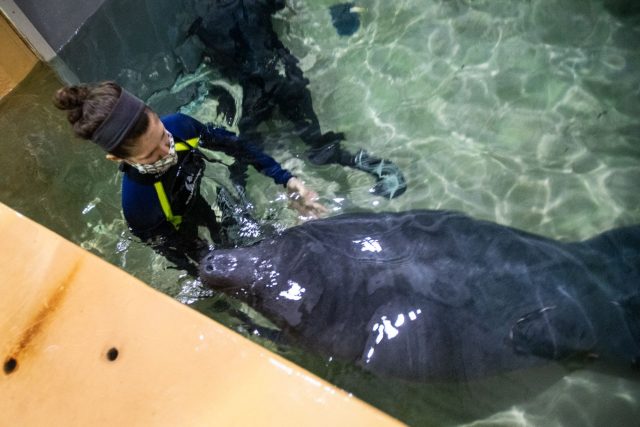Powell, OH — Manatees, Bananatee and Tostone, began their journey back to Florida late Monday night now that they have completed their rehabilitation at the Columbus Zoo and Aquarium after being rescued as orphans off the coast of Florida.

A member of the Zoo’s Animal Care team, along with one of the Zoo’s staff veterinarians, traveled with Bananatee and Tostone, and confirmed that they arrived safely at Miami Seaquarium. There, both manatees will complete their final preparations to be returned to the areas in Florida where they were initially rescued.
Bananatee was rescued from the Indian Creek Waterway outside of Miami, Fla. as an orphan calf on July 27, 2018. When he was initially brought to the Miami Seaquarium, he was estimated to be 9 months old, and he weighed only 42 pounds. When he arrived at the Columbus Zoo on April 25, 2019, he weighed approximately 225 pounds, which is still considered to be small for a manatee as they can weigh over 2,000 pounds as mature adults. Since Bananatee had not yet been weaned and was still under a year old, the Animal Care team at the Columbus Zoo bottle fed him to help supplement his diet as he transitioned to eating lettuce. Thanks to the care he received, he now weighs 657 pounds!
Tostone was estimated to be approximately 8 months old when he was rescued from the Lake Worth Lagoon in Riviera Beach, Fla. on February 8, 2019. Tostone was also an orphan and had begun to show signs of cold stress. Upon his arrival at the Miami Seaquarium, Tostone weighed in at approximately 99 pounds and was about 185 pounds when arrived at the Columbus Zoo with Bananatee. He now weighs 472 pounds and, like Bananatee, is considered to be healthy and ready to begin preparing for his return to Florida waters.
Both manatees were named by the care team at the Miami Seaquarium and were part of what the affectionately dubbed the “banana squad” (which also included two other manatees, Chiquita and Plantaina, who were rescued around the same time). The team liked the name Tostone (a side dish consisting of twice-fried sliced/smashed plantains), and the name Bananatee was inspired by the fact that the team of experts typically start calves on bananas when they first arrive for care.
With Bananatee and Tostone now in Florida, the Columbus Zoo is currently caring for one long-time resident manatee, Stubby. Manatees are generally solitary, though they can occasionally be found in pairs or small groups of a few individuals. Due to the extensive injuries Stubby received from a boat strike, she is considered to be a conditionally non-releasable animal. Her condition is evaluated every five years to determine if she is ready or not to return to Florida, but it is unlikely that she will move out of this category. Instead, she has often assumed the role of a surrogate mother looking after the other manatees and is the first to greet newcomers during their introduction to the Zoo’s Manatee Coast habitat. Stubby is especially beloved by her care team and guests alike for this incredible role she takes in helping other manatees, and she will once again be joined by other manatees with rehabilitation needs very soon.
“It is always difficult for our devoted team to say goodbye to animals who have been in our care, but this is also a time to celebrate because the successful rehabilitation of Bananatee and Tostone is a true testament to the positive impact we’ve had not only on the lives of individual manatees, but also the manatee population as a whole. Bananatee and Tostone represent the 30th and 31st manatee that the Columbus Zoo and Aquarium has rehabilitated since Manatee Coast opened in 1999, and we are extremely proud to be a part of the Manatee Rescue & Rehabilitation Partnership, working to help protect manatees’ future,” said Columbus Zoo and Aquarium President/CEO Tom Stalf.
As part of the Manatee Rescue & Rehabilitation Partnership (MRP), the Columbus Zoo and Aquarium is a second stage rehabilitation facility that provides a temporary home for manatees until they are ready for release back to the wild.
The MRP is a cooperative group of non-profit, private, state, and federal entities who work together to monitor the health and survival of rehabilitated and released manatees. Information about manatees currently being tracked is available at www.manateerescue.org. The Columbus Zoo and Aquarium was the first program partner outside of the state of Florida and is one of only two facilities outside of Florida to care for manatees.
Manatees are at risk from natural and man-made threats. Some of these threats include exposure to red tide, cold stress, disease, boat strikes, crushing by flood gates or locks and entanglement or ingesting of fishing gear.
The Columbus Zoo and Aquarium plays a significant role in the recovery of this important species by participating with other zoos, aquariums and government agencies in rescue, rehabilitation and release efforts. Over the last five years, the Columbus Zoo has also provided more than $346,000 to research, education and protection of manatee species worldwide.
For more information about animals, wildlife experiences, and other happenings at the Columbus Zoo, be sure to follow the Zoo’s social media accounts on Facebook, Instagram and Twitter, and visit us at ColumbusZoo.org.










